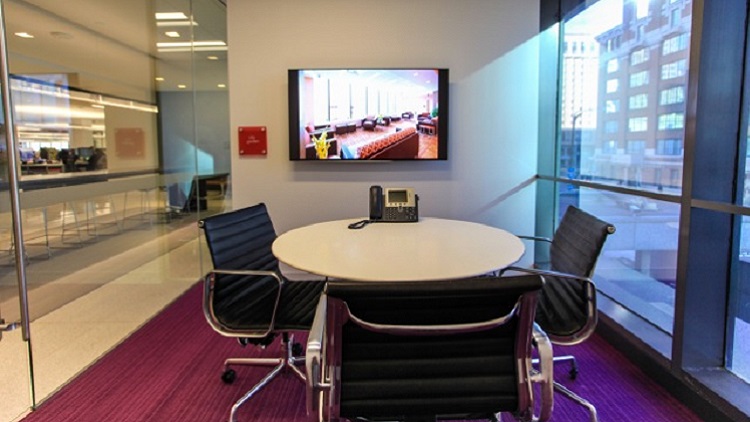There is a multitude of ways to meet and collaborate, but they all depend on a fundamental way we communicate: voice. Even the most video-intensive, annotated-image-sharing session usually begins with audio, according to Wainhouse Research’s “Voice is the Key to Collaboration.” Participants start speaking “and then add video and web sharing as needed.” And they’re doing it more and more often, with 41 percent of surveyed IT decision makers, conference moderators and participants reporting that they participate in an audio conference multiple times per week, and 27 percent stating that they are in daily conference calls.
A good collaboration session begins and ends with quality audio, and to bring that elusive element to every meeting requires consideration of many environmental, user-related, and technological factors:
1) Sound is vital to creating the right image.
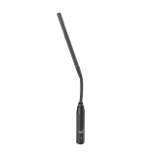
It's very easy to get caught up in the visual aspects of collaboration spaces with projectors and displays getting the lion's share of attention. However, just as you would choose a proper display for your space to maximize the video potential, the choice of microphones needs to be considered just as carefully. There are many form factors and coverage patterns to be considered and careful attention to these details can provide sharp and clean audio to go with your high definition video.
—Mark Donovan, sales engineering manager, Professional Markets, Audio-Technica
2) Take a minimalist approach
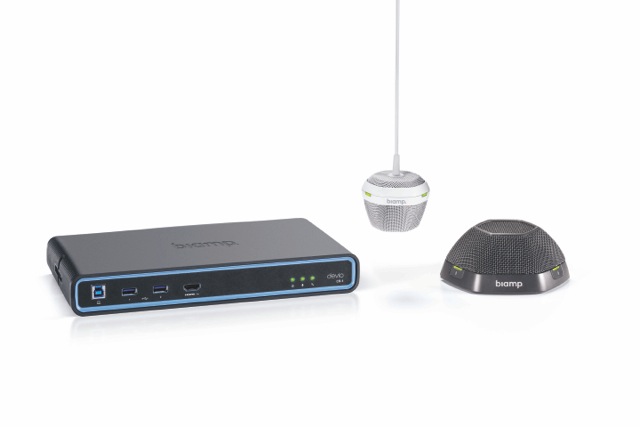
Consider the collaboration space and make sure everything serves a purpose. Improving the audio experience is more than just adding more microphones, even if there is room. Mic selection should provide the best audio coverage possible capturing the natural conversation of the participants within the space so the far end does not miss anything. Get a mic that provides 360-degree beam-forming coverage, automatic tracking and mixing of multiple talkers around the collaboration space, and capabilities like AEC and noise cancellation. This will provide the best audio so nothing is missed.
—Rob Houston, product manager, UC Products, Biamp Systems
3) Use wall space.

Unlike conference and boardrooms, collaboration spaces require thoughtful consideration of the available real estate. Working with smaller room dimensions doesn’t mean scaling technology down to fit these rooms. With real estate at a premium, think about technology that won’t clutter the table area, which should be prioritized for the user’s work space, allowing them to write or work on their laptop or mobile device. Instead, use solutions that can be placed elsewhere in the room, such on the wall. With wall-mounted solutions, technology and cables are out of the way, eliminating users from accidentally damaging or covering up speaker or microphone components that can contribute to a poor audio experience at the near end and far end.
—Holger Stoltze, senior product manager, Revolabs
4) If you must have glass walls, consider their positioning.
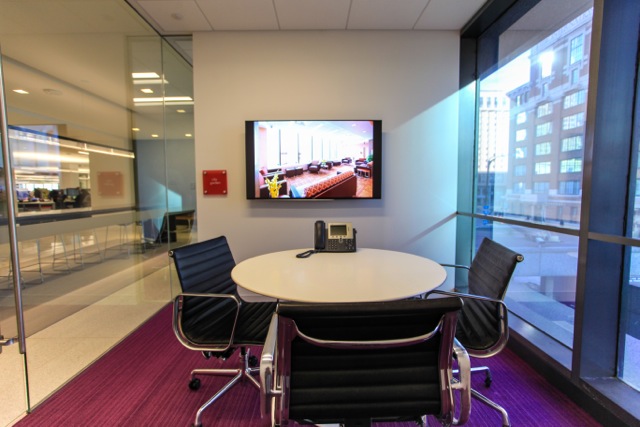
Many modern office designs include lots of interior and exterior glass in conference rooms, which causes reflection of audio in the room and reduces speech intelligibility. Eliminating parallel glass walls will reduce audio reflection, which in turn increases participants’ focus.
—Luke French, solution architect, McCann Systems
5) Reduce mic distance to increase listener happiness.
Typically, complaints from the far-end of a videoconference about the quality of sound on the near-end are fundamentally related to signal-to-noise levels. Table microphones improve signal-to-noise over ceiling microphones by getting the microphone closer to the speaker relative to other noise sources.
—Matthew Mahon, senior consultant, Acoustics and Audiovisual, Arup
6) Turn down the rattle and hum.
The most important consideration for high-quality audio is providing good acoustics and the reduction of ambient noise. If you are struggling to hear in the room due to HVAC, reflections or other noise factors, participants outside the room will struggle more.
—Josh Bittner, SVP of Sales, McCann Systems
7) Provide an even playing field.
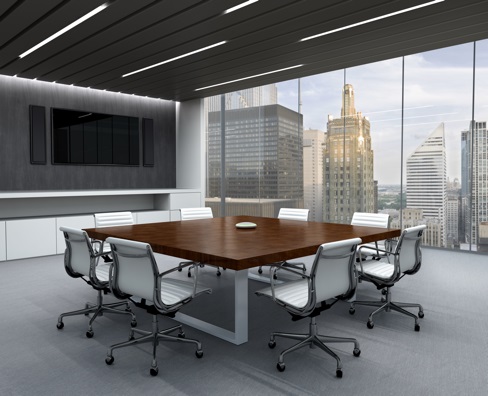
For good audio in collaboration spaces, you want even microphone coverage. Table or ceiling array mics with steerable coverage do this quite well, picking up all the talkers and reducing room noise. Listen to the far-end of a call to make sure even a quiet talker can still be heard clearly from each seat.
—Doug Daube, associate director, Shure Incorporated
8) Go pro audio.
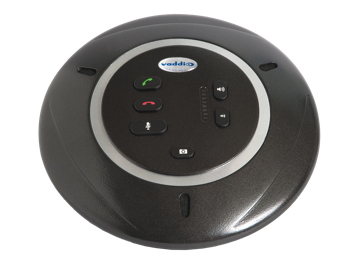
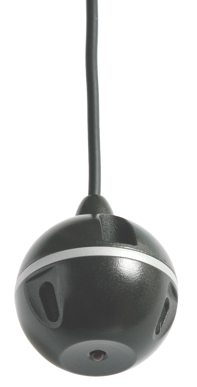
It might seem obvious, but using enterprise-class microphones and loudspeaker systems instead of consumer-based webcams with a microphone and speakerphone yields a significantly improved audio experience for meeting rooms. For organizations who want better audio quality in their collaboration spaces, there is a finally another option between a webcam/speakerphone or custom-integrated conferencing system. Vaddio recently introduced the first enterprise-class conferencing solution leveraging our professional audiovisual technology into an easy-to-use, easy-to-install solution optimized for small to medium conference rooms.
—Darrin Thurston, VP of Product Development, Vaddio
9) Connect sound to image.
When setting up a space for videoconferencing, I encourage the client to have the call audio come from the display rather than from the ceiling for two reasons. First, this helps to recreate the one-one-one conversation with visual and audio cues coming from the same source, or at the very least, the same direction. It is also a sensitivity issue when doing audio-conferencing with table microphones and ceiling speakers. Participants often hear the audio coming from above and tend to talk up to the speaker, since that is where they hear the audio from. That being said, with the microphones being on the table, there is typically a disconnect and audio issue that occurs.
—Stephen Keppler, VP, Senior Sales Executive, McCann Systems
10) Mask the distractions.

Add a sound masking system. Most modern offices are built with fewer partitions and more reflective surfaces, so there’s nothing to block or absorb the conversational noise of the people collaborating from distracting the employees who are trying to focus on individual tasks. Adding sound masking to the space has two benefits: it brings the ambient noise level of the environment up so that those conversations are less noticeable, and the sound is specifically engineered to obscure speech so the words don’t interfere with the internal monologues of the workers who are trying to concentrate.
—Mark Hughes, senior marketing manager, Cambridge Sound Management
